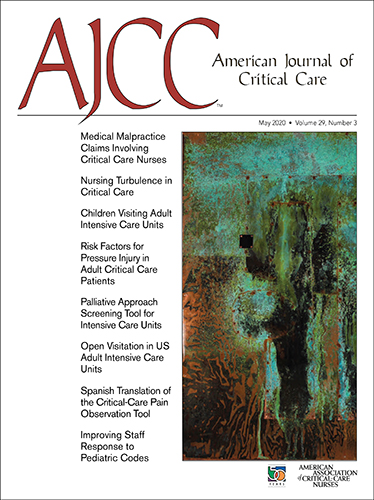Prior to the novel coronavirus, PPV was an underused intervention in most intensive care units. It’s a complex procedure requiring collaboration among physicians, nurses and respiratory therapists, and barriers to its use include lack of preparation and protocols.
The study was conducted in the academic medical intensive care unit (MICU) at Mount Sinai, as part of its implementation of PPV for patients with ARDS. “Implementing Automated Prone Ventilation for Acute Respiratory Distress Syndrome via Simulation-Based Training” is published in the May issue of American Journal of Critical Care (AJCC).
The two-hour interprofessional training sessions consisted of a didactic session, simulated placement of volunteers in prone position and simulated emergency scenarios followed by a structured debriefing. A total of 82 providers with minimal previous PPV experience participated in 12 separate sessions conducted over three days in June 2018.
The simulation-based program allowed Mount Sinai to train nearly 90% of the MICU staff to care for patients in prone position, as well as practice placement of volunteers with different body types.
The PPV implementation task force included the MICU director, the senior director of nursing, the MICU nursing manager and the directors of respiratory therapy, nursing education, wound care nursing, physical therapy and nutrition.
Lead author Ameen Poor, MD, is now an attending physician in the Division of Pulmonary & Critical Care at NYC Health + Hospitals/ Metropolitan in New York City and an assistant professor of medicine at New York Medical College.
“Much like many other healthcare centers around the world, we were initially hesitant to implement PPV at Mount Sinai,” he said. “The successful use of PPV requires collaboration and teamwork, and our training program focused on the interprofessional nature of PPV from the start, with nurses, physicians and respiratory therapists working closely together. All participants were able to voice concerns and develop a sense of ownership of the protocol as it was being developed.”
Pre- and post-surveys of participants found the perceived benefit of PPV increased among all providers, with the largest increase (50%) occurring in nurses. Physicians reported the greatest improvement in comfort with taking care of proned patients (an increase of 51%. The training also improved providers’ comfort in managing cardiac arrest in prone patients.
According to the authors, the significant improvements in comfort levels with PPV across all disciplines in the unit may reflect enhanced teamwork and improved communication achieved during the simulation.
The training also identified 20 latent safety threats that led to changes in the PPV protocol. In addition to addressing equipment needs and staffing concerns, the team created checklists for providers and developed tools to improve communication with patients and families.
The study is part of AACN’s growing library of clinical resources related to ARDS and other complications of COVID-19, including a free self-paced course, “COVID-19 Pulmonary, ARDS and Ventilator Resources,” (https://www.aacn.org/coronacourse). The COVID-19 resources also include free pocket cards, webinars, procedure manual excerpts and journal articles.
To access the article and full-text PDF, visit the AJCC website at www.ajcconline.org.
About the American Journal of Critical Care: The American Journal of Critical Care (AJCC), a bimonthly scientific journal published by the American Association of Critical-Care Nurses, provides leading-edge clinical research that focuses on evidence-based-practice applications. Established in 1992, the award-winning journal includes clinical and research studies, case reports, editorials and commentaries. AJCC enjoys a circulation of more than 120,000 acute and critical care nurses and can be accessed at www.ajcconline.org.
About the American Association of Critical-Care Nurses: For more than 50 years, the American Association of Critical-Care Nurses (AACN) has been dedicated to acute and critical care nursing excellence. The organization’s vision is to create a healthcare system driven by the needs of patients and their families in which acute and critical care nurses make their optimal contribution. AACN is the world’s largest specialty nursing organization, with more than 120,000 members and over 200 chapters in the United States.
American Association of Critical-Care Nurses, 27071 Aliso Creek Road, Aliso Viejo, CA 92656;
949-362-2000; www.aacn.org; facebook.com/aacnface; twitter.com/aacnme
Original post https://alertarticles.info


